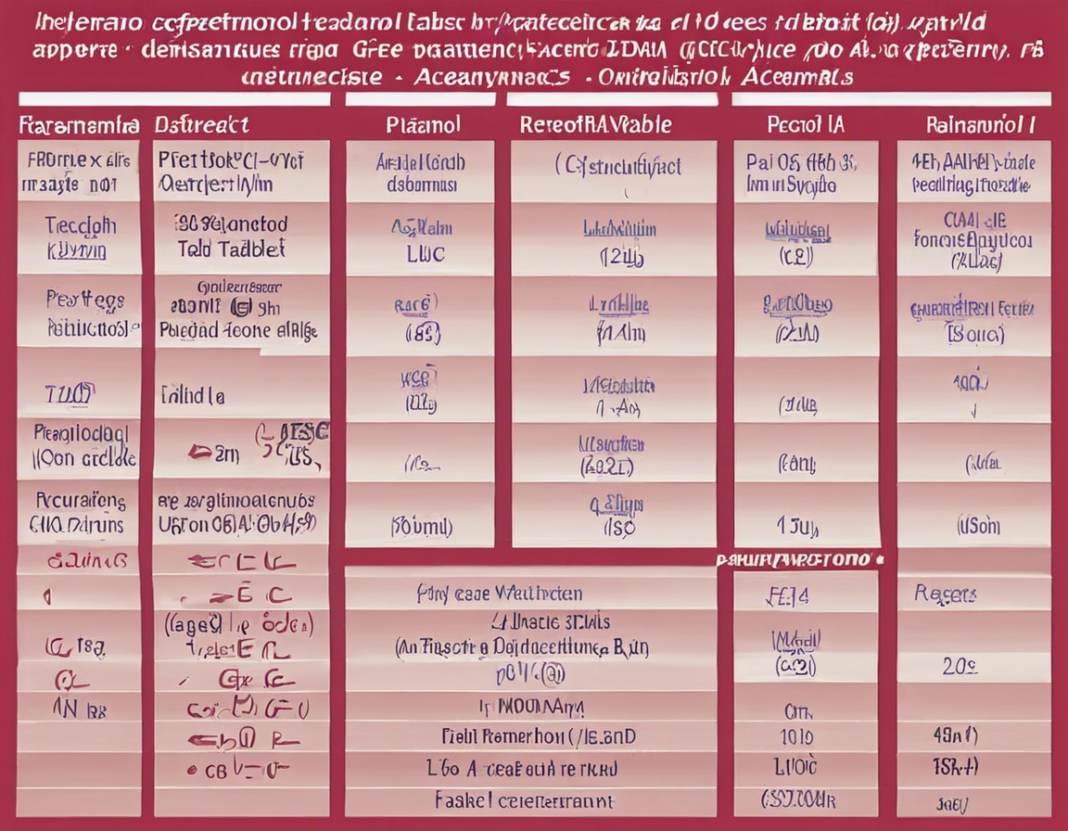Introduction:
Combination drugs are frequently used in medical practice to enhance efficacy, reduce side effects, and improve patient compliance. One such popular combination is Aceclofenac and Paracetamol tablets. Aceclofenac is a nonsteroidal anti-inflammatory drug (NSAID) with potent analgesic and anti-inflammatory properties, while Paracetamol is a widely used analgesic and antipyretic medication. When used together, these two drugs complement each other’s effects and offer several benefits in the management of pain and inflammation.
Understanding Aceclofenac and Paracetamol:
– Aceclofenac works by inhibiting the synthesis of prostaglandins, which are compounds involved in the inflammatory process. This helps in reducing pain and inflammation.
– Paracetamol, on the other hand, acts centrally in the brain to reduce pain and fever. It is considered relatively safer compared to other NSAIDs regarding gastrointestinal side effects.
Benefits of Aceclofenac and Paracetamol Combination:
1. Enhanced Pain Relief:
The combination of Aceclofenac and Paracetamol provides superior pain relief compared to using either drug alone. While Aceclofenac targets inflammation and reduces pain at the site of injury, Paracetamol acts centrally to modulate pain perception in the brain. This dual mechanism of action results in more effective pain relief, making it especially useful in conditions like arthritis, dental pain, and musculoskeletal injuries.
2. Improved Anti-inflammatory Effects:
By combining an NSAID like Aceclofenac with Paracetamol, which has minimal anti-inflammatory properties, a synergistic effect is achieved. This leads to better control of inflammation in conditions such as rheumatoid arthritis, osteoarthritis, and acute sprains, where inflammation plays a significant role in the pathophysiology.
3. Reduced Risk of Gastrointestinal Side Effects:
One of the common side effects of NSAIDs is gastrointestinal irritation, which can range from mild symptoms like dyspepsia to severe complications like ulcers or gastrointestinal bleeding. By combining Aceclofenac with Paracetamol, the overall dose of NSAID required for pain relief is reduced, thereby decreasing the risk of gastrointestinal adverse effects.
4. Convenience and Improved Compliance:
Taking a single tablet containing a combination of Aceclofenac and Paracetamol simplifies the medication regimen for patients. This not only improves compliance but also ensures that patients receive the appropriate doses of both medications simultaneously, leading to better management of pain and inflammation.
5. Rapid Onset of Action:
Aceclofenac and Paracetamol combination tablets are known for their rapid onset of action, providing quick relief to patients suffering from acute pain or inflammatory conditions. This makes them particularly beneficial in situations where immediate relief is desired, such as post-operative pain or acute flare-ups of chronic conditions.
6. Cost-Effective Treatment Option:
Using a combination tablet of Aceclofenac and Paracetamol can be more cost-effective compared to purchasing both medications separately. This is advantageous for patients who require long-term pain management therapy, as it reduces the overall cost of treatment while maintaining efficacy.
7. Versatile Use in Various Conditions:
The versatility of Aceclofenac and Paracetamol combination tablets allows for their use in a wide range of conditions associated with pain and inflammation. From mild headaches and dental pain to chronic inflammatory disorders, this combination offers a holistic approach to managing diverse ailments.
FAQs (Frequently Asked Questions):
1. Can Aceclofenac and Paracetamol tablets be taken on an empty stomach?
It is generally recommended to take Aceclofenac and Paracetamol tablets with food to reduce the risk of gastrointestinal side effects. However, always follow your healthcare provider’s instructions regarding how to take the medication.
2. Are there any contraindications to using Aceclofenac and Paracetamol combination tablets?
Individuals with a history of peptic ulcers, severe liver or kidney disease, or hypersensitivity to NSAIDs should avoid using Aceclofenac and Paracetamol combination tablets. It is essential to consult a healthcare provider before starting this medication.
3. How quickly can I expect relief after taking Aceclofenac and Paracetamol tablets?
The onset of action of Aceclofenac and Paracetamol combination tablets is usually within 30 minutes to an hour after ingestion. However, the duration of relief may vary depending on the individual’s condition and the severity of symptoms.
4. Are there any major drug interactions to be aware of with Aceclofenac and Paracetamol combination tablets?
Aceclofenac and Paracetamol may interact with certain medications like blood thinners, diuretics, and certain antibiotics. Always inform your healthcare provider about all the medications you are taking to avoid potential drug interactions.
5. Can Aceclofenac and Paracetamol tablets be used for long-term pain management?
Long-term use of Aceclofenac and Paracetamol combination tablets should be done under the supervision of a healthcare provider. Prolonged use of NSAIDs can lead to adverse effects, so it is essential to monitor for any potential side effects during long-term treatment.
In conclusion, the combination of Aceclofenac and Paracetamol in a single tablet offers several advantages in pain and inflammation management. From enhanced efficacy and reduced side effects to improved compliance and cost-effectiveness, these combination tablets provide a comprehensive solution for various acute and chronic conditions. As with any medication, it is crucial to use Aceclofenac and Paracetamol under the guidance of a healthcare provider to ensure safe and effective treatment.
